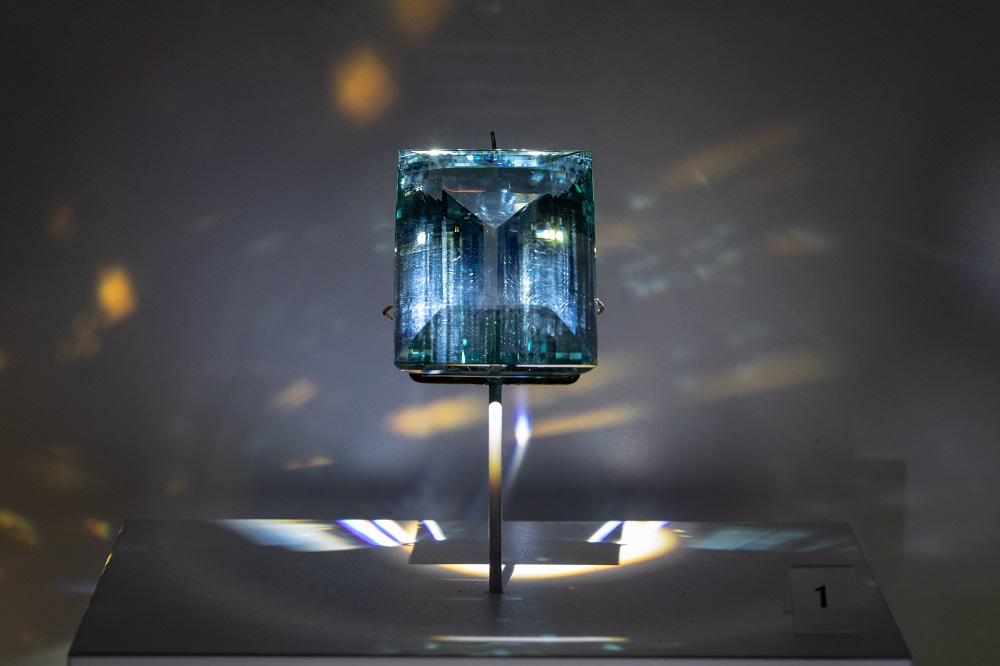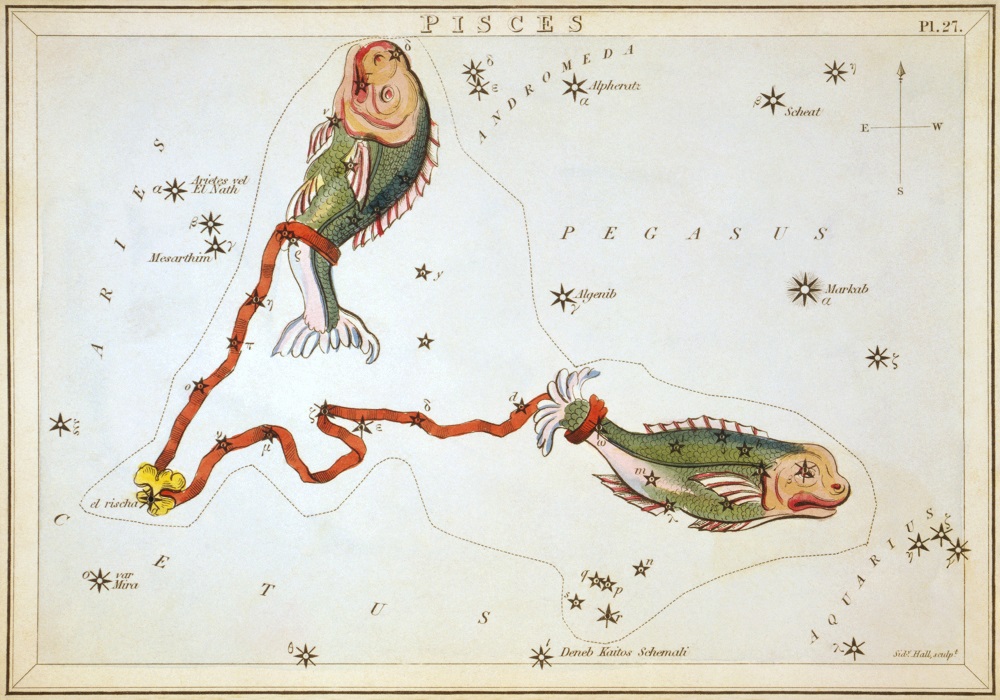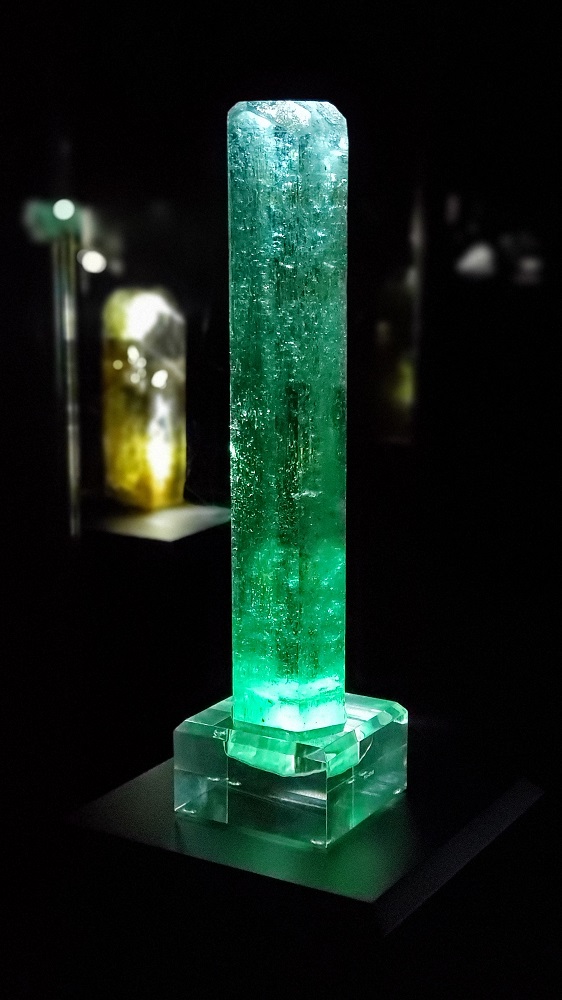When it comes to Spring Break, my mind wanders to two images. First, a white sandy beach and tropical waters with a book in one hand and a piña colada in the other. A close second is getting lost in the vastness of the Cullen Hall of Gems & Minerals. No other gem recreates this feeling more accurately than aquamarine.

Aquamarine’s calm blue to green-blue color stirs up images of crystal clear Caribbean seas, which is no coincidence. The words “aqua” (meaning water) and “marine” (meaning sea) join together to, very obviously, live up to its name. Uncut crystals like the one in our hall can get quite large, 12 inches or so.
In every culture the aquamarine stone has been associated with the ocean or seas. For the Greeks and Romans aquamarine was the sacred jewel of Neptune, God of the Seas, and in myths was part of a siren’s (or mermaid’s) treasure. Wearing an aquamarine pendant was said to make the spirit tranquil and, for sailors in particular, it was an important talisman because it was believed to calm turbulent seas.

Other fun stuff from the Greeks are the Zodiac constellations. The Babylonians described these 12 well-known constellations (and many others) around 1370 BCE and associated them with changes in season or major cultural events. These were then adopted and made popular by the Greeks around 1 CE. With each of these came a story of how those stars were placed in the night sky. For example, Pisces, the two fish, is one of two constellations that align with the month of March. As the story goes, Aphrodite (Venus) and her companion Eros (Cupid) fleeing from the Titan Typhoon. To escape, they jumped into the Euphrates River by turning into fish, Athena then placed them in the sky for protection. This is only one of 12 zodiac constellations that lie on the ecliptic, the annual path the sun takes across the sky.
To learn more about the constellations check out our live showings of Starry Night Express in the Burke Baker Planetarium where the projectionist will help viewers locate various stellar sights in the night sky. Or you can read a previously written article detailing the origins of zodiac signs, written by HMNS Astronomer James Wooten.

On the mineralogy side of things, aquamarine is part of the mineral group known as beryl — Be3Al2(Si6O18) — A silica based mineral with trace amounts of iron giving it the namesake color. Its hardness ranges from 7.5-8 on the Mohs Hardness Scale, which means it can stand up to everyday wear and tear. Emerald is also beryl but exclusively the green variety. Other beryl varieties in our hall include striking samples of pink morganite and bright yellow heliodor.
Our collection includes many wonderful samples of aquamarine in various shades and both cut and uncut pieces!
Help us continue to carry out our mission of science education. Your contribution matters today more than ever. Donate here.

